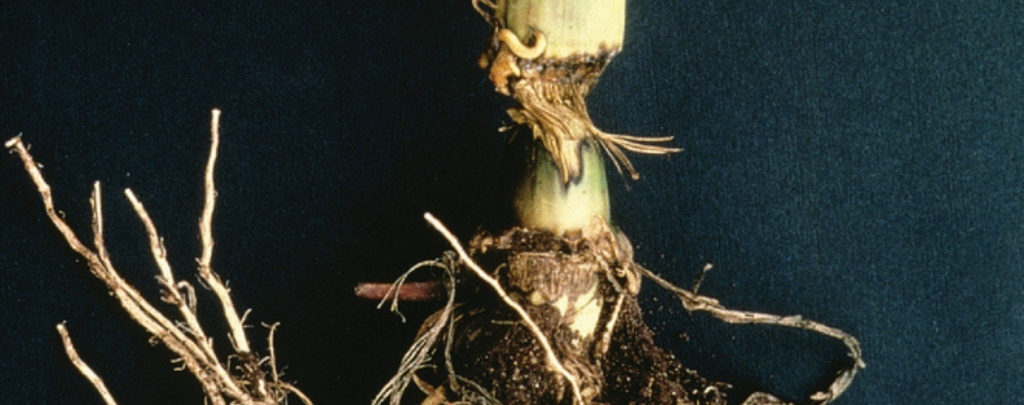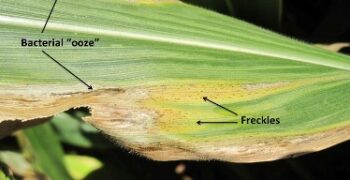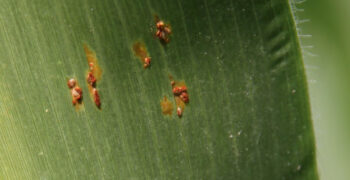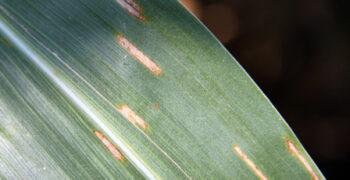Description:
Pythium stalk rot is caused by the oomycete Pythium aphanidermatum. It can occur anytime throughout the growing season but is most common when growing conditions are wet. Pythium stalk rot attacks the first aboveground internode which will leave the rind and pith to be soft, brown, and water soaked. The stalk will become too weak to support the plant and will fall over. The plant may remain green for several weeks because of the living vascular tissue.
Symptoms:
- Soft, brown, and water soaked stalk at the base of the plant
- Usually can only see symptoms on the first node above ground
- Stalks won’t break off completely but can be twisted or distorted
- Plant can still be green for weeks while the plant is infected
Life Cycle:
The disease overwinters as oospores in the soil. The oospores produce sporangia which releases mobile zoospores. These zoospores can swim to the plant and infect it at soil surface or just below. The pathogen can infect the crop by movement of crop debris or excess wetness in the soil.
Scouting:
- Best time to scout is after pollination, but can occur before flowering as well
- High humidity, hot, and wet are optimal conditions for Pythium stalk rot to attack.
- The pinch and push tests are usually very effective when scouting for stalk rots
Management Practices:
- Poor soil drainage can lead to a higher risk of Pythium stalk rot
- Good sanitation can make sure the crop doesn’t overwinter or transfer to different fields
- Increased air circulation within field helps to reduce the risk of disease
- Planting resistant hybrids can help as well



